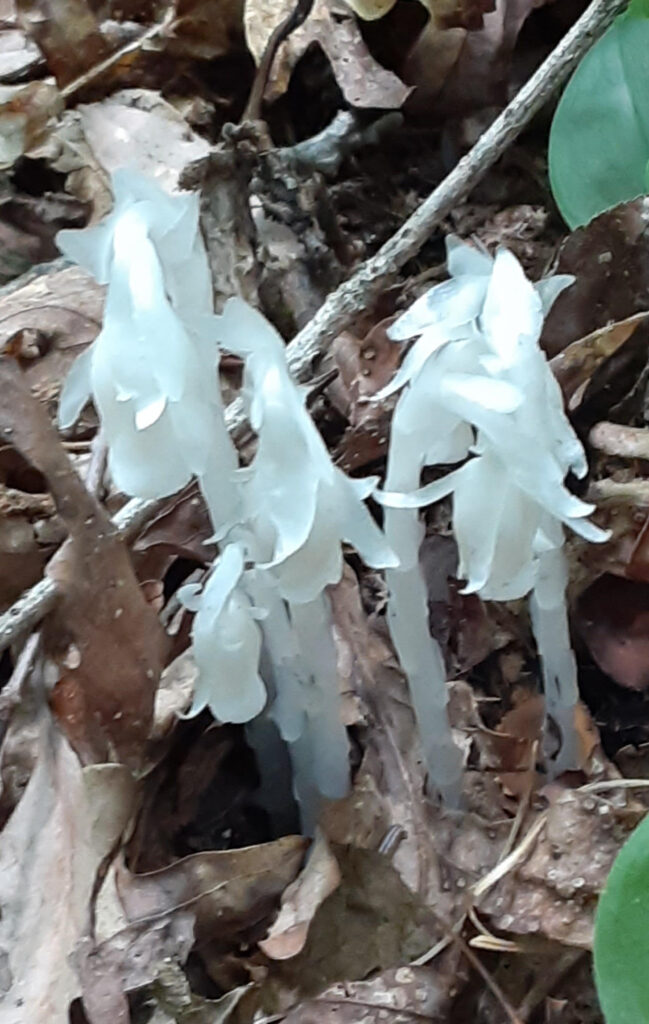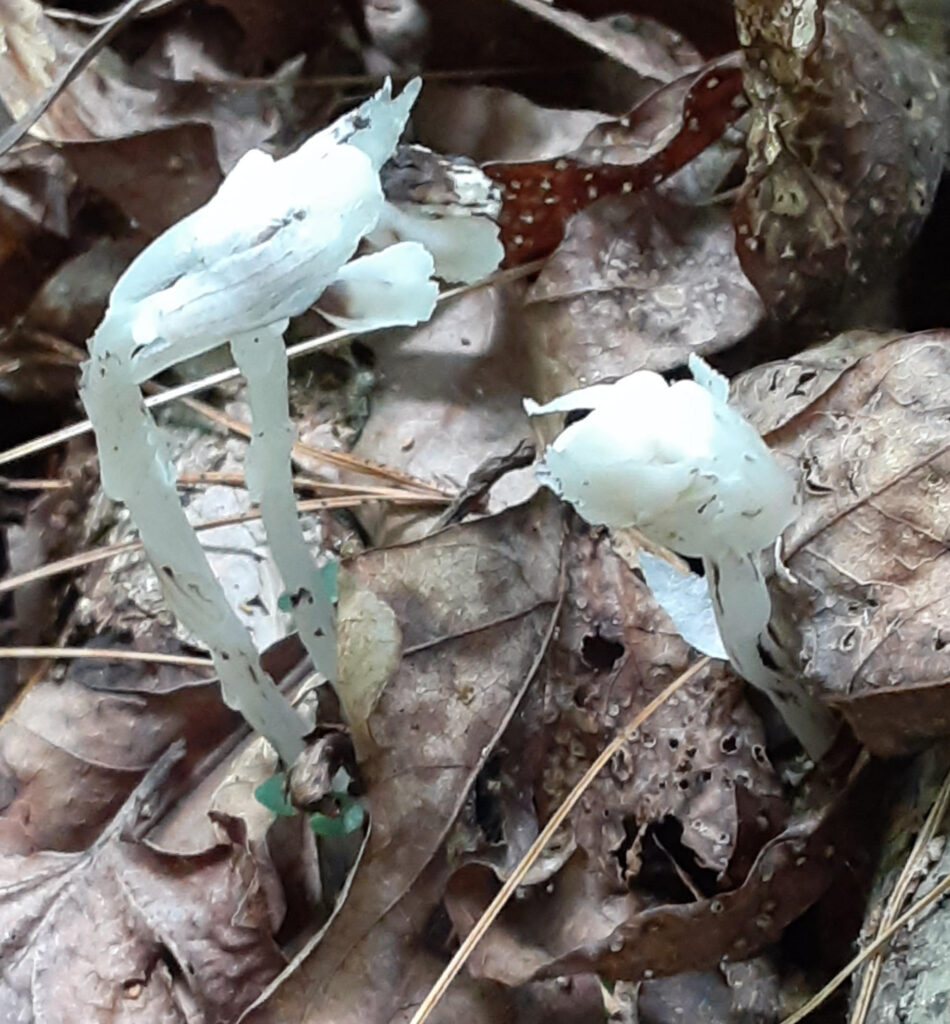By, Susan Sprout
Here is an organism that could be misidentified just by its appearance and where it lives. Dark woods, waxy, white appearance, no chlorophyll. Is it a fungus of some kind, pushing up through the woodland humus? NOPE! It is a perennial plant and a recent addition to the Heath Family – which is surprising, as some of the other members of that family are teaberries, blueberries, cranberries, azaleas, and our state flower, Mountain Laurel.

Blooming from June to September, its single, bell-shaped flower is a half-inch to an inch long and droops down to keep the rain water out until it has been pollinated by bees and flies that crawl in. As the seeds begin to mature, the flower raises its head upward and the whole plant turns dark brown to black. When dry, the five-sectioned oval seed capsule will split open to disperse them. It is quite a transformation of the whole plant from an all white (or pinkish) pipe-shaped plant, with no leaves, just tiny bracts sometimes having black spots… to the straight up and down black, dried up twig topped with a small pointed oval.
What a lot of common names for such a small and rarely seen plant! Corpse plant, Ghost plant, Ice plant, all referring to its pale presence in the deep, shadowy woods. I’ve always heard it called Indian Pipes because of the plants’ shapes. The scientific name, Monotropa uniflora, refers to the big, one-time upward move done by their one and only flower!

Lacking the chlorophyll required to make their own food, Indian Pipes receive nourishment through their short, stubby roots from underground mycorrhiza, made up of fungal mycelium that in turn, are associated with photosynthetic trees like oak and pine. It is a three-way relationship, or network, that has actually been proven by scientists who mapped out the progress of radioactive carbon isotopes they used to tag the sucrose that travelled to the tree roots and was absorbed there by the fungus mycelium of Russula mushrooms as food, and then passed on to the Indian Pipes so they could grow. How great is that!
Indian Pipes are native to temperate regions in North America, northern South America and parts of Asia and have been used by many indigenous people living there with them. One interesting medicinal use is a water extraction of the plant for inflamed eyes that is actually antibacterial. The whole plant contains glycosides that may be toxic and should never be eaten.


